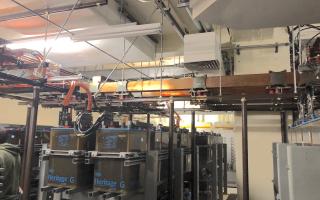 Course Description:
Course Description:
This comprehensive "Live" Instructor-Led (On-Site or Virtual) course is designed for Engineers, Central Office Techs, and Installers, plus any others with the responsibility for the installation, maintenance, troubleshooting, and repair of Central Office infrastructure power and plant. NEW material is continuously being added to reflect some of the latest hardware and systems available in a mixed copperfiber central office environment, including automatic power monitoring, infrared cameras, battery testers, and the new sodium-nickel-chloride battery.
The course provides a broad yet detailed study of Central Office power systems, common to both earlier and modern hardware, covering virtually all aspects of DC power, including the initial commercial AC-to-DC conversion, plus the common grounding between AC and DC. Racking, cable runs, and fasteners are important, particularly when isolated ground zones (IGZ) are required. Cable suspension and securing methods are investigated, along with concepts like separation, cable rating, seismic rating, and bend-radius. Some focus is placed on the varieties of rectifiers available today, with typical and premium features, and the relative benefits of an integrated system versus stand-alone components. Existing and improved battery designs are compared, including traditional wet-cell and newer absorbent-glass mat (AGM), plus different chemistries and float voltages. Different types of generators, transfer-switches, and disconnects are also discussed, with examples of traditional and newer offerings with improved user interfaces. Grounding via an SPG is a key emphasis, using various regulatory and standards for their recommendations and requirements, including the NFPA's NEC, the IEEE NESC, the federal CFRs, plus certain Telcordia requirements and best-practices like GR-63 (NEBS), GR-1275 (Installation) and GR-1502 (Engineering).
Test equipment is also featured, including how to select and use the correct type of DC clamp meter, plus the use of battery testers, ground field meters, infrared cameras, and automatic power system monitoring.
Multiple examples are shown for a typical central office with both earlier DC rectifier, battery, and BDFB components, plus newer systems that integrate some or all of these parts. A remote equipment cabinet example is also used, demonstrating various options for site grounding, including maintaining an IGZ, and ground connections coordinated with the power company.
The course can also include material as-needed, such as Outside-Plant to CPE connections like the grounding of cable shields, messenger leads, and tracer leads. More detail on remote site power can also be shown, using a mobile telephone-switching office (MTSO) example where on-the-spot power and grounding are needed. The course can also offer material on Data Center power and plant infrastructure, which typically uses AC-powered servers that are increasingly being used by telcos and service providers.
Students Will Learn:
Course Length:
4 Days

